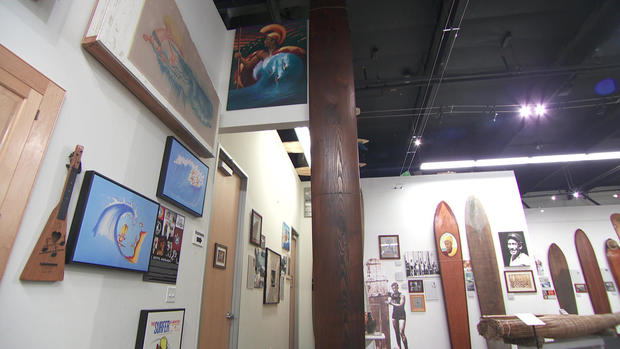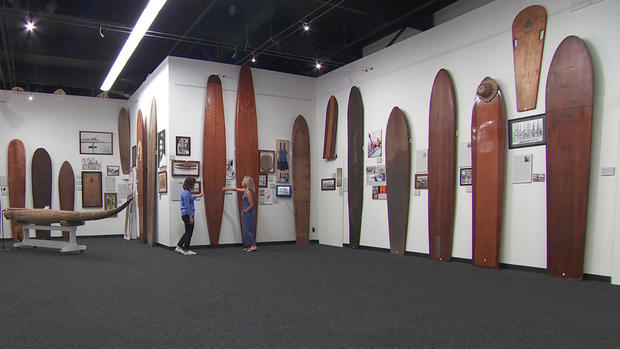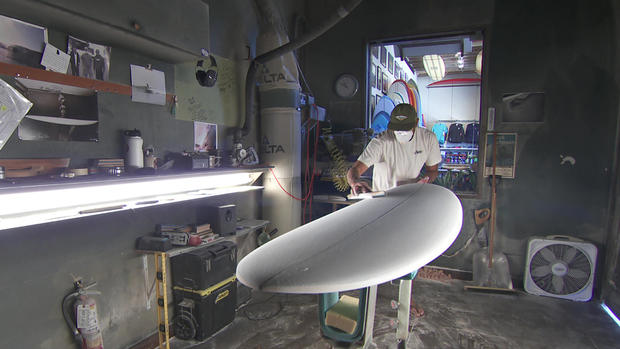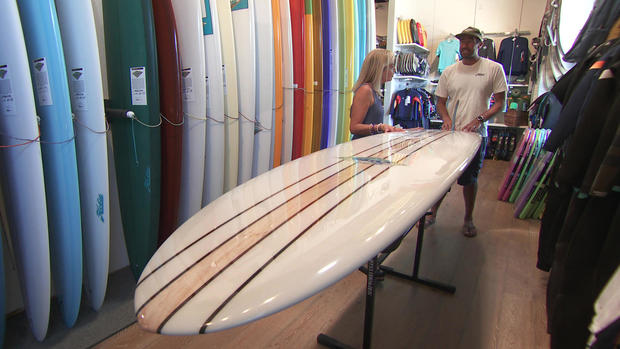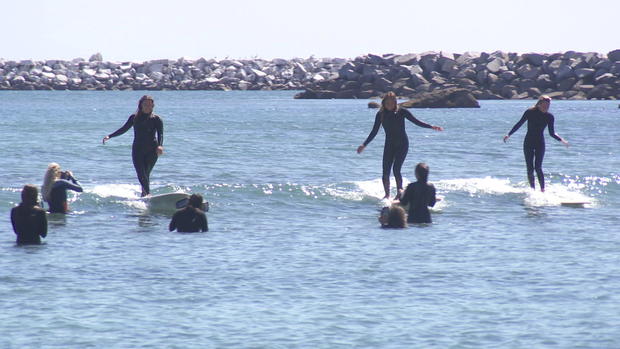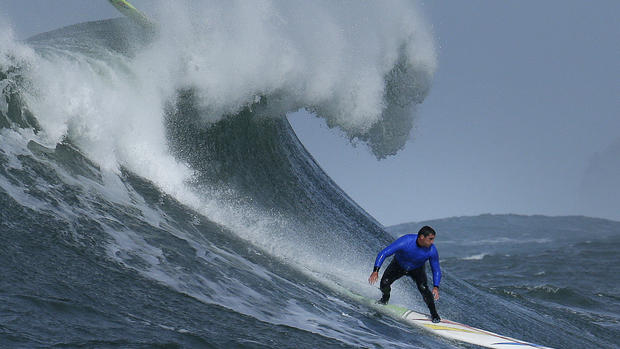▶ Watch Video: The history of surfboards
Surfing off the California coast is as popular as it’s ever been, from the party wave riders at Malibu, to the folks chilling at Doheny, where you can sit for hours in the lineup just waiting for the right wave. And for that, you need the right board.
Correspondent Tracy Smith – paddling about in the surf – notes that a board big and wide and made out of foam is perfect for little waves; in fact, just about anyone could ride it. But it wasn’t always that way.
Surfing was once a sport reserved for Hawaiian royalty, who rode the waves on boards of solid wood that were long, narrow, and majestically heavy. Patti Paniccia showed Smith one example that weighs 140 pounds.
“How did they even get it out to the beach?” Smith asked.
“If you’re royalty, they carry it for you.”
Paniccia used to surf for a living, one of the few female pro surfers back in the 1970s when the surfing world was mostly a boys’ club. Today she’s a trustee of the Surfing Heritage and Culture Center in San Clemente. She showed Smith examples of later surfboards, that had more shape than the longer, narrow ones, and were somewhat lighter (about 55 pounds).
By the late 1950s, boards got shorter and lighter, and surfing had taken its place in the popular culture.
Surfboard maker Hobie Alter, who started making boards with lightweight balsa wood, switched to polyurethane foam, and helped take the sport to the next level. Hobie’s Dana Point, Calif., store is still thriving, and his namesake Hobie Surfboards are still made the old-school way.
Shaper Gary Larson starts with a blank piece of foam and custom carves it for a surfer’s specific needs.
He’ll angle the sides (or rails) to help a board stay put on a steep wave face; sharpen the nose for high performance turns; or carve a wider tail for stability.
Some boards have thin strips of wood, called stringers, running down the middle for added stiffness, and style. This model runs around $1,800.
But each surfboard is different. “I’ve had boards that I’ve tried to duplicate for myself,” Larson said. “And each board has its own characteristics.”
“It’s like snowflakes? No two are alike when they’re hand-shaped?” asked Smith.
“I agree!”
A machine-made board are often cheaper and easier to ride, but they’ll never have that certain something that a shaper puts into a board they’re making just for you.
Smith said, “I’m gonna ask you a hippie-dippy question: Do these boards speak to you?”
“That’s a common question,’ said Larson. “Yeah, I guess I do feel like there’s a little more soul in a hand-shaped board.”
But no matter how good a surfboard’s design, it’s only as good as the surfer, and the waves that day – and every one of those is different, too.
For more info:
- Surfing Heritage & Culture Center, San Clemente, Calif.
- Hobie Surfboards
- Hobie Surf Shop, Dana Point, Calif.
Story produced by John D’Amelio. Editor: Remington Korper.
See also:
- A look at the history of surfing, one of the world’s oldest sports (“CBS This Morning: Saturday”)
- Gallery: Titans of Mavericks surfing competition
















